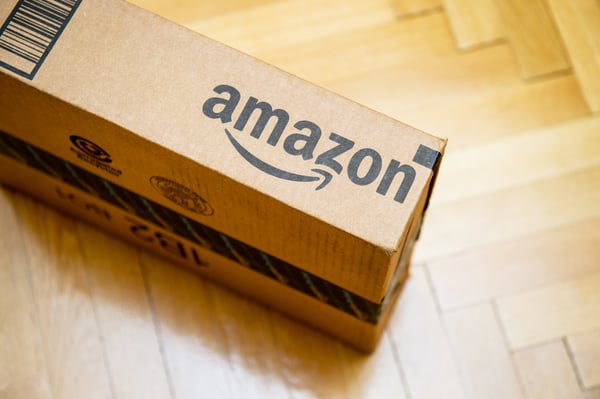La nouvelle réalité du commerce de détail : Série sur le commerce électronique (Partie 1)

How does the 'Amazon effect' play out for traditional 'bricks and mortar' retailers? Their old-school supply chain was relatively simple – product was delivered either from their own DC or direct from suppliers to retail locations, where customers would come to browse and buy items directly off the store shelf.
We begin this four part E-commerce series by outlining the new reality for retailers across the globe.
The new retail reality
With competition from online retailers, the bricks and mortar stores are now facing a dilemma. If they don't engage in e-commerce they will lose business to online stores that promise fast home delivery and returns. If they do go down the e-commerce route, they have to re-think their supply chain. Customers now may have to be served in multiple ways: as walk-in traffic at the retail store, via online orders that are delivered to home, or via online orders that are picked up in store. And how are orders fulfilled? Are they picked in the stores and mailed out? Are they picked at the DC and mailed out? Are in-store pickup orders picked in store, or at the DC, and shipped to the store? What about returns? Are they managed in-house, by a third party, at stores, or in the DC? Suddenly, the level of complexity has multiplied, many times.
"If they don't engage in e-commerce they will lose business to online stores that promise fast home delivery and returns."
Choosing a solution
Traditional retailers faced with the dilemma of e-commerce have choices, in keeping with the complexity of the situation. And they all involve a level of pain. Inaction is one option that some retailers fall into, often thanks to the cost of keeping up. But to be left behind is to fail and retailers that choose inertia are failing. In the United States, more than 8,000 retail locations were shut down in 2017[1], and more than 20 retail companies filed for bankruptcy[2].
The alternative is to invest in the supply chain and adopt either a pure-play e-commerce model; or some kind of hybrid that will allow customers to order online and have products delivered to their homes, or picked and packed for in-store pickup. To accomplish this will require an investment in technology for most retailers. Depending on the company size, it could be as simple as upgrading to a new solution for inventory management, or as expensive and complex as adding a purpose-built DC to manage e-commerce fulfillment.
Automated DCs are becoming a more common choice for e-commerce fulfillment. This massive commitment to technology delivers high throughput with typically lower costs for labor and sometimes utilities. To make these facilities work at peak efficiency requires additional technology to automate tasks such as appointment scheduling in order to guarantee precise unloading times, door allocations, load priorities and commitments to vendors (click here to read our case study on how a European grocery chain optimized its automation using C3's dock scheduling system.) Offloading these tasks from humans to a system takes away uncertainty, eliminates wasted time reorganizing schedules and speeds flow to and from the docks.
Whether big or small, all retailers that choose to compete in the e-commerce space share common needs in their back-end operations: visibility and speed. To keep the supply chain moving and ensure that orders are being fulfilled correctly supply chain managers and operators need to know where the product is and when it will be arriving. This is as true at the origin’s dock door as it is at the customer's front door.
Online customers expect their purchases will be delivered as promised, and that they will be kept informed if an exception occurs. Achieving this requires complete end-to-end visibility. But if the receiving operation is not organized, and using manual processes causes trucks to wait for docks to unload, costs will mount as companies pay for not only their own staff's inefficient use of time but also for driver detention and container demurrage. As well, when documentation is not in order, with POs missing and so on, fulfillment systems cannot operate at peak efficiency.
Electronic commerce
E-commerce is electronic commerce; it's simply logical to manage it using information systems and by digitizing existing paper processes. Customized rules for business parameters can ensure the smooth operations of inbound and outbound operations. Getting the information perfect–by sharing data, not paper – streamlines and eliminates wasteful use of human resources and time. These solutions can also help solve the problem of fluctuating inventory levels and rapidly changing product assortments in the DC. With many retailers resorting to holding the product in trailers on their yards, it is becoming increasingly difficult for operators to manage this inventory. Using a yard management system (YMS) can keep track of what's where; especially for a large retailer with thousands of trailers on the yard. A YMS can integrate the trailer-held inventory into the WMS and automatically schedule the yard-held trailers to the dock for unloading when levels fall inside the DC.
If operations staff have insight into what is coming and going from a DC's dock doors and when, companies can gain velocity, reduce inventory levels and better manage staffing requirements. Adding dock scheduling capability and marrying it with yard management can provide the low hanging fruit of e-commerce success.
It doesn't have to require massive investments in automation or new facilities to take advantage of the information and time savings these technologies can offer. But when these large investments are made, dock scheduling and YMS will help speed up the ROI and help the business take full advantage of the investment and ensure the lasting success of their digital sales operations.
Retail never sleeps...
Retailers facing the 'Amazon effect' really do face a squeeze. Their environment, competition, customers and suppliers are all evolving, almost by the minute. If they chose to compete, they need to take a hard look at how they use technology and make sure that they are deploying the best solutions that will help them deliver on time and 100 percent accurately. One sure way to do that is by gaining full awareness of how a facility interfaces with inbound and outbound product. Without that knowledge, the risk of failing to keep up with the competition grows.
REFERENCES:
[1] Here are the 18 biggest bankruptcies of the 'retail apocalypse' of 2017, Kate Taylor, Business Insider, December 20, 2017.
[2] "The running list of 2017 retail apocalypse victims", Corinne Ruff & Ben Unglesbee, Retail Dive, December 13, 2017.


